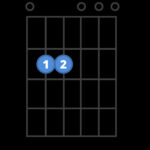The Gibson SG Special stands as a distinctive model within the iconic SG (Solid Guitar) family. Often compared to its siblings, the SG Standard and SG Junior, the Special offers a unique set of features that cater to a specific player preference, particularly within the vintage guitar market. Let’s delve into the key characteristics that set the SG Special apart, especially when considering vintage models.
One of the most immediately noticeable differences in a vintage SG Special is the absence of body binding. While some might expect binding on a guitar of this caliber, vintage SG Specials were intentionally designed without it, contributing to their more utilitarian and raw aesthetic. This is in contrast to the SG Standard, which typically features body binding for a more refined look.
Alt text: Side-by-side comparison of vintage Gibson SG Standard, Special, and Junior guitars, highlighting body shapes and finishes.
Body construction is another point of interest. While modern SG models, including some Standards, may feature multi-piece bodies, vintage SG Specials from the early 1960s are known for often having single-piece mahogany bodies. This solid mahogany construction is highly prized by players for its tonal resonance and sustain. The notion that Specials might utilize “better wood” is subjective; however, the single-piece bodies of vintage Specials are certainly a desirable feature for many. Gibson’s wood selection in the vintage era wasn’t always about aesthetics, leading to variations in grain and weight across models, including the highly sought-after Les Paul Bursts.
Alt text: Detailed view of a vintage Gibson SG Special guitar body, showcasing the solid mahogany wood grain and simple, unbound edges.
Pickups are a significant differentiator. Modern Gibson offers a wide array of pickups across their lines, but vintage SG models had clear distinctions. Vintage SG Standards came equipped with humbuckers, delivering a hotter, thicker tone. In contrast, vintage SG Specials and Juniors featured P-90 pickups. Specials traditionally housed two P-90s, offering a punchy, articulate, and harmonically rich sound, while Juniors had a single P-90, known for its raw and direct tone. The choice of P-90s in the Special is a key element in its sonic identity.
Alt text: Headstock detail of a Gibson SG Special guitar, showing the simpler ornamentation compared to a Standard and the button style tuners.
Headstock design and tuners also vary between vintage SG models. SG Standards boast a more ornate headstock design, while Specials and Juniors feature simpler headstocks. Furthermore, tuner styles differed; Standards typically had tulip-style tuners, while vintage SG Specials and Juniors were equipped with button-style tuners. Junior headstocks were often silk-screened, further distinguishing them.
The vibrato systems also presented variations. Vintage SG Standards often featured a “walrus tooth” handle vibrola, later transitioning to a sideways Vibrola and then the Maestro Vibrola. SG Specials and Juniors generally came with different vibrola systems.
Alt text: Close-up of a vintage Gibson SG Special guitar bridge, highlighting the non-adjustable lightning bolt bridge design.
Finally, bridge designs differed in vintage models. SG Standards were equipped with adjustable bridges, while vintage SG Specials and Juniors often featured non-adjustable “lightning bolt” bridges. This may have evolved in later production years within the 1960s. Regarding finishes, while custom colors for vintage SG Standards are less common, SG Specials were available in Polaris White, a rare and sought-after custom color for this model.
In conclusion, the vintage Gibson SG Special occupies a unique space in guitar history. Its distinct features, including the lack of binding, single-piece mahogany bodies in early models, P-90 pickups, and simpler appointments, contribute to its unique character and appeal among guitar players and collectors. Understanding these distinctions is crucial for appreciating the SG Special’s place within the broader Gibson SG legacy.

